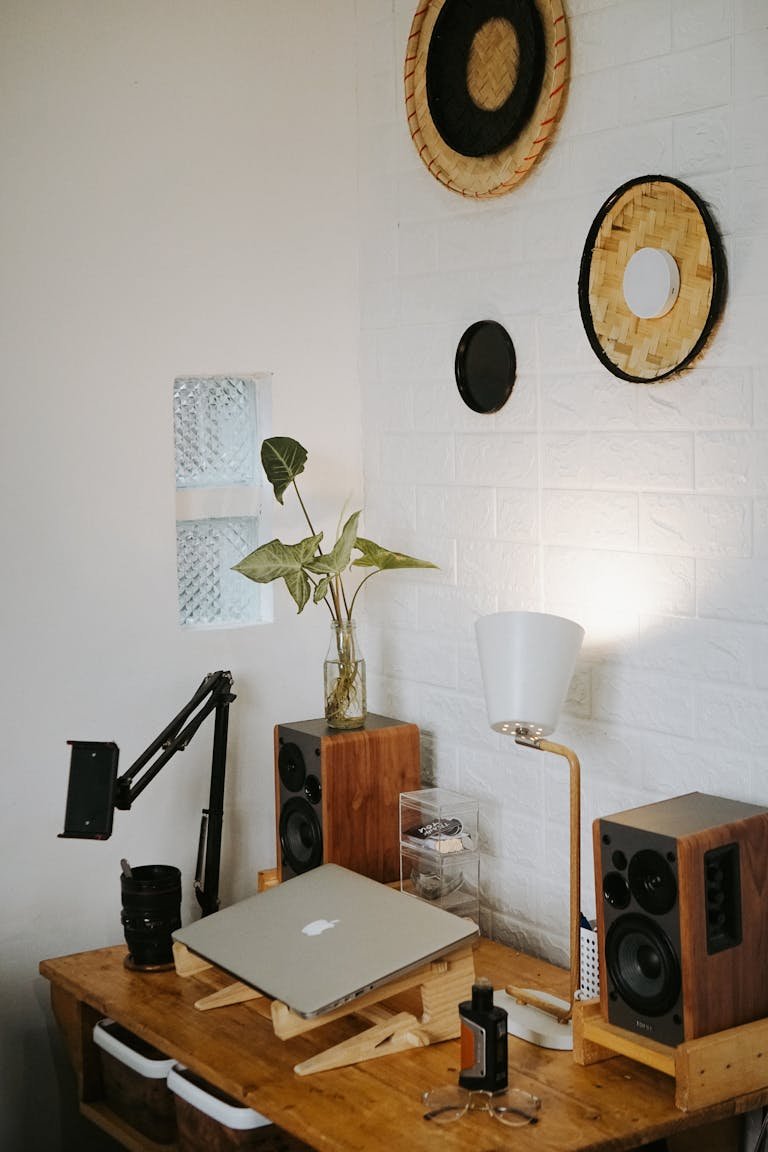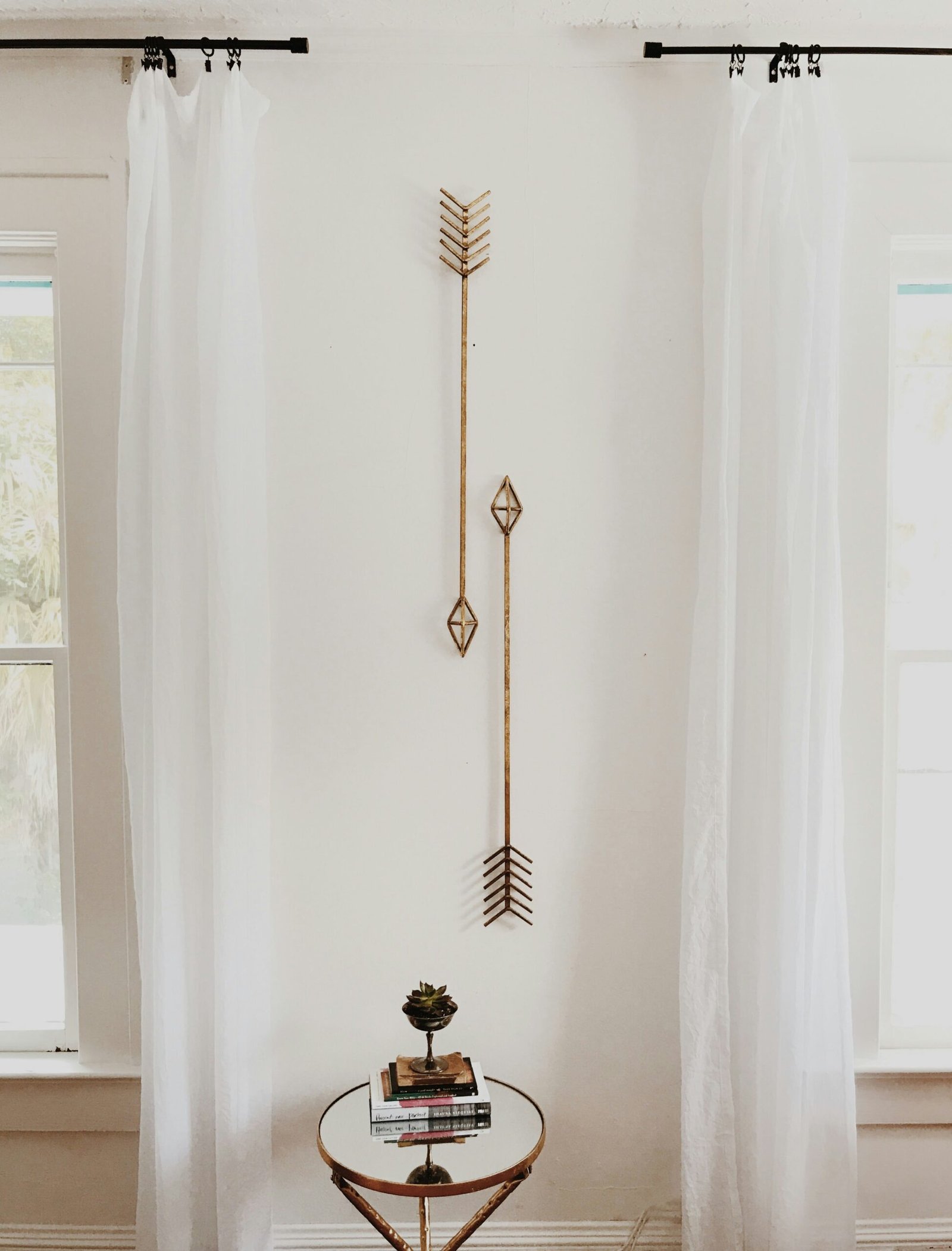
Understanding Noise Pollution in Home Offices
Noise pollution refers to the excessive or unwanted sound that can negatively impact one’s environment, particularly in a home office setting. This uninvited auditory disturbance can take various forms, including the persistent hum of traffic, the clatter of neighboring activities, and everyday household sounds such as appliances and loud conversations. The prevalence of these noises can significantly detract from an individual’s ability to focus and maintain productivity. In a context where concentration is paramount, understanding noise pollution becomes essential for fostering a conducive workspace.
Productivity in a home office is often compromised by these disruptive sounds, which can breach the necessary peace for effective work. Studies have shown that consistent interruptions due to noise can lead to decreased work efficiency and increased stress levels. The distractions posed by external sounds can fragment attention, resulting in a frustrating cycle where tasks take longer to accomplish, ultimately affecting overall job performance. Furthermore, prolonged exposure to noisy environments can also lead to chronic stress and anxiety, further impeding cognitive functions.
Common sources of noise pollution in home offices include outdoor traffic noise, construction activities, and the sounds emitted from nearby neighbors. Inside the home, noises from family members, pets, and electronic devices can similarly contribute to a chaotic auditory environment. To mitigate these disruptions and enhance mental well-being and focus, it is crucial to prioritize the creation of a quiet workspace. One effective strategy to achieve this involves the integration of noise-reducing curtains for home office settings. These curtains serve not only as a decorative element but also as a functional solution to block out intrusive sounds, thereby allowing individuals to cultivate an environment conducive to productivity and relaxation.
What Are Noise-Reducing Curtains?
Noise-reducing curtains, as the name suggests, are specially designed window treatments aimed at minimizing sound transmission from the outside environment into a space, making them an ideal choice for home offices. These curtains are constructed using a combination of materials and techniques that significantly enhance their sound-dampening properties compared to standard curtains. The effectiveness of noise-reducing curtains lies in their thickness, layering, and overall density.
Typically, noise-reducing curtains are made from materials such as heavy fabric blends, including polyester or velvet. These materials are often denser than those used in regular curtains, providing an additional barrier to sound waves. A key feature that distinguishes these curtains is their multi-layer construction. Many noise-reducing options incorporate multiple fabric layers, which further enhances their ability to absorb and block noise. This multi-layer design not only contributes to sound reduction but also helps improve thermal insulation within the home office, adding a layer of comfort and efficiency.
In contrast, standard curtains primarily serve aesthetic purposes and are usually made from lighter materials that do not offer the same level of sound absorption. While they may provide some basic protection against light and heat, their soundproofing capabilities are limited. Noise-reducing curtains are tailored for those who prioritize a serene work environment. They effectively manage external noise from traffic, construction, or other disruptions, allowing for better focus and productivity within the home office.
Furthermore, noise-reducing curtains can also come equipped with features like grommets or pockets, which ensure a snug fit around your windows, minimizing gaps where sound can seep through. This attention to detail ensures that when you invest in noise-reducing curtains, you are choosing a solution that enhances your work environment by monitoring not just visual aesthetics but also auditory comfort.
Benefits of Using Noise-Reducing Curtains in a Home Office
The installation of noise-reducing curtains in a home office presents numerous advantages that significantly enhance the work environment. One of the most crucial benefits is improved concentration. By effectively dampening external noise, these specialized curtains create a quieter atmosphere conducive to focusing on tasks. Studies have shown that less auditory distraction leads to better cognitive performance, allowing individuals to engage more deeply with their work.
Additionally, the reduction of noise contributes to lower stress levels. A serene workspace promotes mental well-being, which is essential for individuals who often work long hours. By minimizing disturbances caused by traffic, neighbors, or other external factors, noise-reducing curtains help create a calm environment where one can thrive. Consequently, a decreased stress level directly correlates to increased creativity and better problem-solving skills.
Another noteworthy advantage is the enhancement of privacy. Home offices can sometimes feel exposed to the outside world. Noise-reducing curtains not only block sound but also shield your workspace from prying eyes, allowing you to work without feeling monitored. This added layer of privacy can foster a sense of security and comfort, making it easier to express one’s ideas freely without interruption or anxiety.
Lastly, noise-reducing curtains contribute to the overall aesthetic appeal of your office space. Available in a variety of styles, colors, and materials, they can complement existing decor and provide a polished look to any room. The right curtains not only serve a functional purpose but also enhance the visual atmosphere, creating a pleasing environment that reflects professional identity.
These numerous benefits—from improved concentration to enhanced aesthetics—ultimately lead to greater productivity and job satisfaction for individuals seeking to optimize their home office experience.
Choosing the Right Noise-Reducing Curtains
When it comes to creating a conducive work environment in your home office, selecting the right noise-reducing curtains is paramount. Start by considering the fabric types available. Velvet and heavy polyester are popular choices due to their thick, dense qualities, which help absorb sound. Conversely, lighter materials may not offer the same level of noise reduction. Additionally, look for curtains that come with a layer of foam or have been specifically designed with soundproofing features.
Window size is another crucial factor in selecting noise-reducing curtains for your home office. Measure your windows accurately to ensure a proper fit. Curtains that are too short or narrow will allow unwanted noise to seep through, undermining their effectiveness. To determine the correct measurements, use a tape measure to assess both the height and width of your windows, and add extra length to achieve a more elegant and insulating look when the curtains are drawn.
Insulation properties are also vital. Opt for curtains with thermal insulation, as they not only help minimize noise from outside but can also contribute to energy efficiency. This dual purpose enhances your home office’s comfort, particularly in varying climates. In terms of aesthetics, consider your style preferences. Choose colors and patterns that align with your existing decor while still serving the primary function of noise reduction. Solid colors tend to blend seamlessly into various design schemes, whereas bold patterns can make a statement.
Lastly, ensure that your noise-reducing curtains are easy to install and operate. Different hanging methods, such as grommets or rod pockets, might appeal to different tastes. By taking into account these various aspects, you can effectively select curtains that not only contribute to a quieter atmosphere but also complement the overall design of your home office.
Installation Tips for Maximum Effectiveness
To maximize the effectiveness of noise-reducing curtains for your home office, proper installation is crucial. The installation process begins with selecting the right mounting hardware, as this will directly affect how well the curtains perform. Ensure that the brackets are sturdy enough to support the weight of your curtains, and consider using ceiling-mounted tracks for a cleaner look and better sound dampening capabilities.
Next, pay attention to the placement of the curtain rod. Ideally, the rod should extend several inches beyond the width of the window frame. This will allow the curtains to fully cover the window and minimize any potential sound leakage from the sides. The height at which you mount the rod is also significant; hang it as close to the ceiling as possible for optimal sound absorption. This vertical extension creates a barrier that softens sound waves, enhancing the acoustic qualities of your home office.
Another essential step is to ensure a snug fit around the window edges. Given that noise-reducing curtains are designed to absorb sound, any gaps or loose areas around the window can undermine their effectiveness. Use adhesive hooks or Velcro strips to secure the curtains down to the wall or window frame if necessary. This not only prevents sound from seeping through but also keeps unwanted drafts at bay, adding an extra layer of comfort and energy efficiency to your workspace.
Moreover, consider layering your noise-reducing curtains with blackout curtains for additional sound dampening. The combined thickness can enhance the curtain’s acoustic properties, making your home office a quieter and more productive environment. By following these installation tips, you can significantly improve your workspace’s noise reduction capabilities.
Maintaining Your Noise-Reducing Curtains
Noise-reducing curtains for home office spaces serve a vital role in creating a peaceful working environment, but their effectiveness can be compromised without proper care and maintenance. Regular upkeep ensures these curtains not only prolong their lifespan but also maintain their noise-insulating qualities.
Cleaning noise-reducing curtains should be approached with care. It is advisable to check the manufacturer’s instructions, as different materials may require different cleaning methods. Most curtains can be washed gently in cold water to avoid damaging the fabric. Depending on the usage and exposure to dust or allergens, a washing frequency of every three to six months is generally recommended. However, high-traffic areas may require more frequent cleaning.
When it comes to cleaning agents, opt for mild detergents that are free from harsh chemicals. Such agents are less likely to degrade the fabric’s noise-reducing properties over time. It is essential to avoid bleach or strong solvents that may not only harm the curtains but also diminish their effectiveness in sound insulation.
Another critical aspect of maintaining noise-reducing curtains is protecting them from wear and tear. To prevent fading and degradation caused by direct sunlight, consider positioning your home office in a way that naturally minimizes light exposure to these curtains. Additionally, using a protective lining can significantly enhance their longevity. This approach will also provide an added layer of sound insulation.
Regularly inspecting for any signs of damage, such as fraying edges or fabric thinning, allows for timely repairs, preserving both the aesthetic appeal and functionality of the curtains. By following these maintenance tips, you can ensure that your noise-reducing curtains for home office remain an effective barrier against disruptive external sounds.
Complementing Noise-Reducing Curtains with Other Soundproofing Techniques
In the quest for a tranquil home office, noise-reducing curtains serve as an effective solution to mitigate external sounds. However, to achieve optimal soundproofing, it is beneficial to complement these curtains with other soundproofing strategies. By implementing a multi-faceted approach, one can enhance the overall acoustic environment.
Firstly, consider the use of area rugs or carpets, which can significantly absorb sound waves. Hard floors tend to reflect sound, creating an echo that can be distracting during work hours. By placing rugs under desks or in high-traffic areas, you can dampen noise and create a more serene atmosphere. Thick, plush materials are particularly effective in minimizing sound reflections, making them ideal for enhancing the soundproofing qualities of noise-reducing curtains.
Acoustic panels also offer an effective method to reduce noise within a home office. These panels come in various designs and can be strategically placed on walls to absorb sound. An aesthetically pleasing option, acoustic panels can contribute to both the functional and decorative aspects of the workspace. When paired with noise-reducing curtains, they form a cohesive strategy that minimizes unwanted noise while maintaining a professional appearance.
Furthermore, the arrangement of furniture can significantly influence sound dynamics. Large furniture items, such as bookcases or sofas, can act as barriers that block and absorb sound waves. Placing these pieces against shared walls can be a practical measure to decrease noise transmission. Additionally, it is essential to address the sealing of gaps around windows and doors. Weather stripping and door sweeps can prevent sound leaks, thus boosting the overall effectiveness of noise-reducing curtains.
Incorporating these additional techniques not only enhances soundproofing but also enriches the overall comfort and productivity of your home office. By thoughtfully implementing these strategies, one can create a workspace that fosters focus and tranquility.
Customer Reviews and Recommendations
Noise-reducing curtains for home office environments have gained significant attention from users seeking to create a more productive workspace. Many customers report noticeable improvements in their concentration levels, thanks to the effective sound-dampening qualities of the curtains. For instance, a user from San Francisco noted that after installing a set of blackout noise-reducing curtains, the distractions from street noise were drastically minimized, allowing for a more focused working environment. This resonates well with those residing in busy urban areas, where external noise can impede concentration.
Popular brands like Eclipse and Nicetown have emerged as top choices among consumers. Eclipse curtains received praise for their stylish designs while maintaining impressive sound absorption capabilities. Users have expressed satisfaction with the diverse range of colors and patterns available, which allows them to enhance both functionality and aesthetics in their home offices. Many buyers highlight how these curtains not only block out intrusive sounds but also provide light control, creating a comfortable ambiance for work.
Nicetown has also received commendations for their exceptional quality and affordability. A customer review remarked on the significant reduction of noise levels when the curtains were drawn, stating that they transformed their once chaotic workspace into a serene haven. The ease of installation has been another aspect of satisfaction, with many finding it straightforward to mount these curtains without professional help.
Overall, testimonials from various users consistently emphasize the dual benefit of noise-reducing curtains for home offices: the improvement in sound quality and the enhancement of interior design. With numerous options available, those looking to invest in these curtains can find solutions that meet both their aesthetic and functional needs.
Conclusion: Transforming Your Home Office Experience
Creating an effective home office environment requires careful consideration of various factors, particularly noise management. A peaceful atmosphere is essential for maintaining focus and productivity, especially when distractions from external sources such as traffic, construction, or even household activities can disrupt your workflow. Noise-reducing curtains for home office settings serve as a practical solution to mitigate these disturbances, allowing you to concentrate better on your tasks.
Investing in high-quality noise-reducing curtains not only enhances your workspace acoustics but also adds aesthetic value to your home office. These curtains are designed not only to block out sound but also to provide insulation, thereby improving the overall comfort of your workspace. When selecting the right curtains, consider factors such as fabric thickness, texture, and color, as these elements can significantly influence both their noise-reducing capabilities and the visual appeal of your office.
Moreover, the installation of noise-reducing curtains is a straightforward process that can yield substantial benefits. You can achieve an immediate transformation in your home office environment with minimal effort. By choosing curtains that effectively absorb sound waves, you create a serene and productive atmosphere that fosters creativity and concentration. As you embark on the journey of enhancing your home office, remember that prioritizing a tranquil setting is key to elevating your work experience. The relatively simple action of installing quality curtains is an investment towards a more enjoyable and effective workspace.






